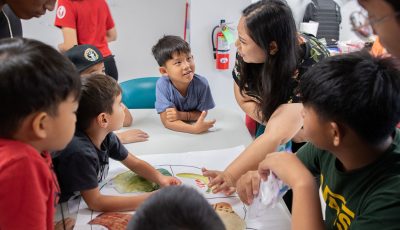Less judging, more problem solving

A noticeable change in the way students are taught is the focus on what the students are doing, not on how the teacher is teaching. Teachers are taught that students learn best when they are highly engaged in the learning process, including hands-on activities in group settings. (Contributed Photo)
There is a Native American prayer that goes “Great Spirit, grant that I may not criticize my neighbor until I have walked a mile in his moccasins.” In the New Testament Christ says, “Judge not that ye be not judged.” Special education teachers use the term “Neurological diversity” to identify types of learning disabilities, with some educators saying we are all neurologically diverse; in other words, we do not know how others think and feel. But just imagine if we could walk in Gary Dubrall’s moccasins. It seems that he cares about the CNMI youth and wants them to have options and opportunities away from this island. He seems to be educated himself with a variety of diverse island experiences. He doesn’t seem to be trying to sell us something that would benefit him financially, and I highly doubt the newspapers are paying him anything for his letters.
As for Commissioner Sablan, I have worked with her for 24 years, yet I haven’t walked in her moccasins. She makes decisions that I do not agree with, but I have never had the reason to think that she is not passionate about education. I do know that she is strict about how PSS money is spent, and she is particularly strict about PSS travel. One online comment that caught my attention was a criticism about Commissioner Sablan’s commitment to the Chamorro Carolinian Language Heritage Studies program. Hawaii is proving the value of a strong cultural education program. Students are once again speaking Hawaiian as their first language, and there are numerous examples of at-risk students, dropouts, and ex-convicts that are changing their lives for the better as they reconnect with their culture. CNMI students who are fluent in their native languages are also top students in the core subjects, and they are better able to adjust to life when they leave the CNMI. The New York Times has an excellent article on a research related to the benefits of students knowing their cultural stories. It can be read at: https://www.google.com/?gws_rd=ssl#q=new+york+times+stories+that+bind+us
I suggest we spend less effort judging, and instead focus our efforts on solving problems and doing things that will improve our quality of life.
Valrick Welch
Capital Hill, Saipan



























